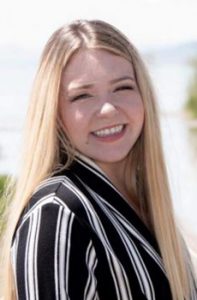Project Boomerang: U Admin Plans for the Future of Campus
The Legacy Bridge at the University of Utah Campus. (Photo by Abu Asib | The Daily Utah Chronicle)
April 9, 2021
As the University of Utah prepares for a mostly in-person fall semester, U administration is planning how the semester will look and what protocol will need to be followed moving forward.
“We are setting a target to have more in-person classes this fall, more in-person activities this fall,” Chief Human Resource Officer Jeff Herring said.
Herring led Project Orange, responsible for shutting down the University in Spring 2020. Now, Herring will lead the return-to-campus process named Project Boomerang.
“We are planning for the large majority of the classes to be in person this Fall,” Senior Vice President for Academic Affairs Dan Reed said.
Fall break will be making a comeback this upcoming school year as well. Reed said it’s just another example of them planning a return to a “new normal.”
Administration is looking at the issues with courses, classes, and certifications which require an in-person learning experience. In some cases, it is a legal requirement.
“We had to shut down pretty quickly here. It has been a long year of doing that. I’m just so grateful for everybody,” Herring said.
Vaccine Requirements
“If we continue on the trajectory that we are, we expect everyone who’s an adult, who wants to get vaccinated, will be able to do so before the fall semester starts,” Reed said.
The COVID-19 vaccine was approved under an expedited process through the FDA, which means students and faculty can’t be forced to get vaccinated.
“We can’t require anyone to be vaccinated under an emergency authorization,” Reed said. “We can strongly encourage people to do so, and we are, but we can’t legally require anyone.”
Class Sizes
According to Reed, limiting the amount of in-person classes over the past two semesters was successful in reducing transmission.
“There were almost no incidents that we know of,” Reed said. “I can say this from talking to other institutions in the Pac-12 where there was COVID spread in the classroom.”
Additionally, cleaning supplies will continue to be available on campus to help stop the spread of the virus, and mask-wearing will likely continue into the upcoming semesters.
“We at this point are still assuming that face coverings would be required in enclosed spaces and other sort of protocols that we put in place this year for protection,” Reed said.
Reed also said a final decision hasn’t been made on the distance between desks.
“We want to make sure we [return to campus] in a phased approach as we ramp back up and remove some of the barriers that we’ve had in place for some of this last year,” Herring said.
Desks were previously spread six feet apart, which affected class sizes in previous semesters.
“[W]e have a lot of medium size classrooms, but not that many large classrooms,” Reed said. “And so the particular place the impact was most felt was on larger classes because if you spread people out, you substantially reduce the number of people that can be in the class,” Reed said.
Lasting Impacts
There were some benefits from the pandemic, according to Reed: One-touch video recording for faculty; training to help faculty teach online; and upgraded Wi-Fi throughout campus.
“We will all learn some things from this shift online,” Reed said. “We outfitted a large number of classrooms with one-touch video recording to make it easier for faculty to record content and make it available online.”
Professors had the opportunity to learn how to teach online courses, and the influx of people on the internet led to upgraded Wi-Fi.
“[M]ost of the public areas on campus outside now have Wi-Fi access, so you should be able to pretty much walk around any place on campus and get access to Wi-Fi,” Reed said.








